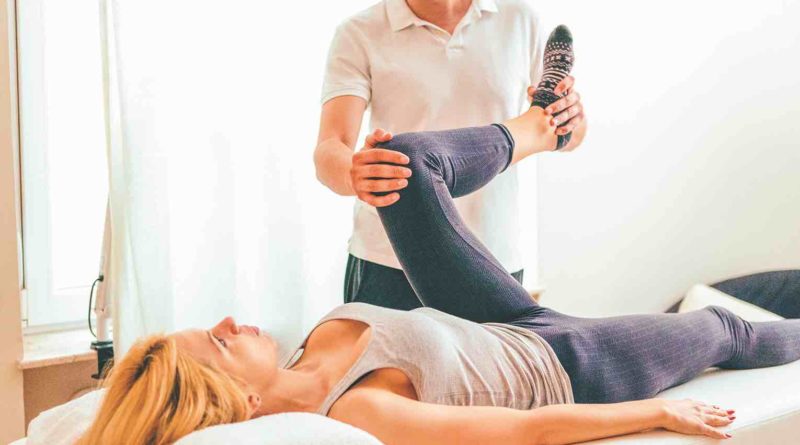Cartilage Injuries can be a Pain in the Knee
By Nathan K. Endres, MD
Chances are, anyone reading this right now has dealt with knee pain. Whether you’re a skier, boarder, climber, hiker, runner, biker or maybe even a paddler – most of us have had a knee problem at some point.
Some knee problems seem to get better and go away, while others can linger and interfere with activities and, sometimes, just daily life.
There are lots of causes of knee pain. One of the most common causes is articular cartilage damage. Articular cartilage is a specialized tissue made up of water, collagen and cells (chondrocytes) surrounded by a matrix. Cartilage is the bearing surface of any joint. Normal cartilage provides a nearly frictionless interface to allow for smooth motion.
In the knee, cartilage covers the end of the femur (thigh bone), the top of the tibia (shin bone) and the back of the patella (knee cap). Normally, cartilage looks white and shiny — like the inside of a coconut, or a cue ball. It is good at resisting compression, but not as good at resisting shear forces.
Articular cartilage does not receive a blood supply, so cartilage injuries cannot heal on their own like injuries to other tissues. However, cartilage also has no nerve supply; so many cartilage defects do not cause any pain. Pain related to cartilage injuries may actually come from the underlying bone or from irritation of the lining of the joint.
The menisci are also very important structures, which are unique to the knee and related to articular cartilage. There are two menisci in each knee, one on the outside (lateral) and one on the inside (medial). They function essentially as shock absorbers and protect the articular cartilage from undue stress. Therefore, injuries to the menisci, which are very common, can lead to cartilage deterioration.
Cartilage damage comes in different forms and presents in different ways. The damage may be a single, focal cartilage defect, like a pothole in an otherwise normal road. Or, the damage may be broad and diffuse throughout the whole joint. The general term for this scenario is arthritis or arthrosis.
Cartilage injuries can occur from a single, traumatic event or from chronic overload and steady deterioration over time. People with symptomatic cartilage injuries typically complain of activity-related pain and swelling. Sometimes mechanical symptoms such as catching, grinding or locking are present, especially if there is a loose piece of cartilage floating in the joint that causes the knee to intermittently get stuck. Evaluation of cartilage injuries usually involves standing x-rays to assess for arthritis and often an MRI, especially if arthritis is not seen on x-rays.
TREATMENT OPTIONS
There are a number of treatment options for cartilage problems, depending on the patient’s symptoms and how much the problem is affecting their quality of life. Sometimes, just a period of rest can be helpful to allow the knee to calm down and allow swelling and inflammation to subside.
Activity modification can also be a good idea. The more load the knee joint sees, the more likely a cartilage problem is to become symptomatic. Running and jumping sports may aggravate the knee, whereas lower impact activities such as biking, swimming, cross-country skiing and using an elliptical machine may not. Weight loss can also be extremely helpful in reducing symptoms related to cartilage damage.
A strengthening program can also be very helpful. Building endurance in the muscles that surround and support the knee can lead to a substantial improvement in symptoms. Think of your muscles as shock absorbers. If your muscles are trained and fit, such that they don’t fatigue quickly, they can help absorb more stress and take pressure off the joint structures.
Key muscles include the quadriceps muscles, hamstring muscles and even muscles around the hip, low back and abdominal region. It isn’t so much brute strength that matters, rather building endurance in those muscles. The key is to go about strengthening those muscles properly without overloading the joint in the process.
What is also helpful is to know exactly where the cartilage damage is in the knee. For example, a common location of cartilage damage is under the kneecap, which can lead to pain in the front of the knee, especially with stairs. Quadriceps strengthening can be very helpful for this problem, however, doing deep squats and lunges to strengthen the quadriceps may aggravate the problem and lead to more pain and no results.
A more effective way to strengthen the quadriceps in this scenario would be to do straight-leg raises or short-arc quad strengthening exercises. A physical therapist, or athletic trainer, can really help by prescribing and overseeing the right type of strengthening program.
BRACES
Using a brace can sometimes be an option. An unloader brace is designed to take pressure off a specific area of the knee. For example, a common location of cartilage wear is on the inside of the knee. A medial unloader brace may be used in this situation to unload the inside of the knee. Lateral unloader braces are also available. These braces are typically worn when performing high impact activities.
Medication can also be helpful. Non-steroidal anti-inflammatory medications (NSAIDS, Advil, Aleve, Motrin) are the most commonly used and can be very effective at reducing pain and swelling. There are also a host of oral supplements (e.g. glucosamine/chondroitin) that are marketed as treatments for cartilage problems. Anecdotally, these can be helpful; however, there is limited scientific basis for these supplements.
INJECTIONS
Injections may serve a role. Corticosteroid injections are sometimes used to reduce pain and swelling, but cortisone is not particularly healthy for tissues and may actually promote further deterioration or degeneration. Typically, cortisone injections are reserved for patients who already have arthritis and are not commonly used in younger patients, or patients who have more focal cartilage injuries.
A major area of interest right now is the use of biological injections – specifically platelet rich plasma (PRP) and stem cells. These injections are now being used to treat pain related to cartilage deterioration, but as of yet the evidence supporting the use of these injections in that setting is very limited, and although there is promise, no definitive conclusions can be made. Hopefully, with additional research we will know if they really work.
SURGERY
If all nonsurgical treatments fail, then surgery for cartilage damage may be an option. The type of surgery depends on the location and extent of the damage. For an isolated cartilage defect, when the rest of the cartilage is healthy, a cartilage repair procedure may be indicated. There are a host of cartilage repair procedures described, including micro-fracture, cartilage grafts and cartilage cell transplant procedures. All of these can be potentially successful in the right setting. Often cartilage repair procedures are combined with other procedures that address knee alignment issues, ligament instability and/or meniscal deficiency.
When someone has more diffuse cartilage damage and essentially has arthritis, cartilage repair procedures may no longer be a good option and the best surgical option may be some type of joint replacement.
There are multiple different types of joint replacement options, but essentially a joint replacement involves replacing the cartilage bearing surface with a new bearing surface, typically a combination of plastic and metal. Sometimes only a portion of the knee joint is replaced, which is called a partial knee replacement, or “uni”. When there is more extensive damage throughout the knee then a full knee replacement is performed. These procedures can be quite successful at eliminating pain and symptoms and restoring a good quality of life.
The key to any successful surgery is picking the right surgery for the right patient, setting realistic goals ahead of time and proper rehabilitation.


Excellent, well thought through article which covers the whole issue – many thanks Mr Johnson, Johnny, Telemark (well hopefully again sometime…) skier, England.